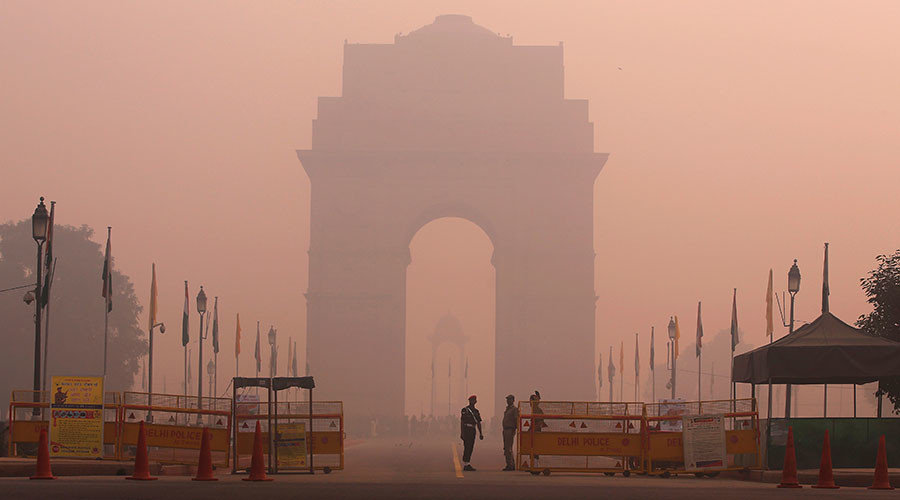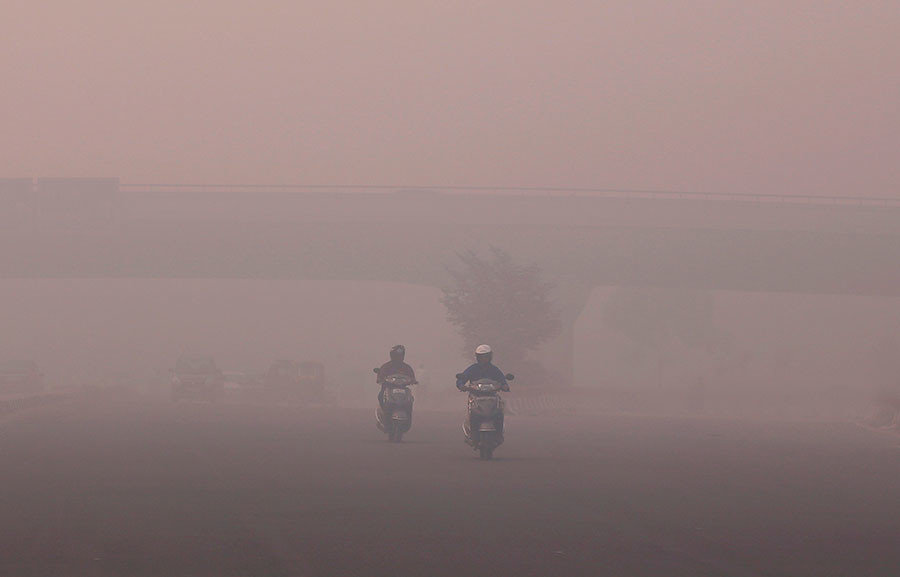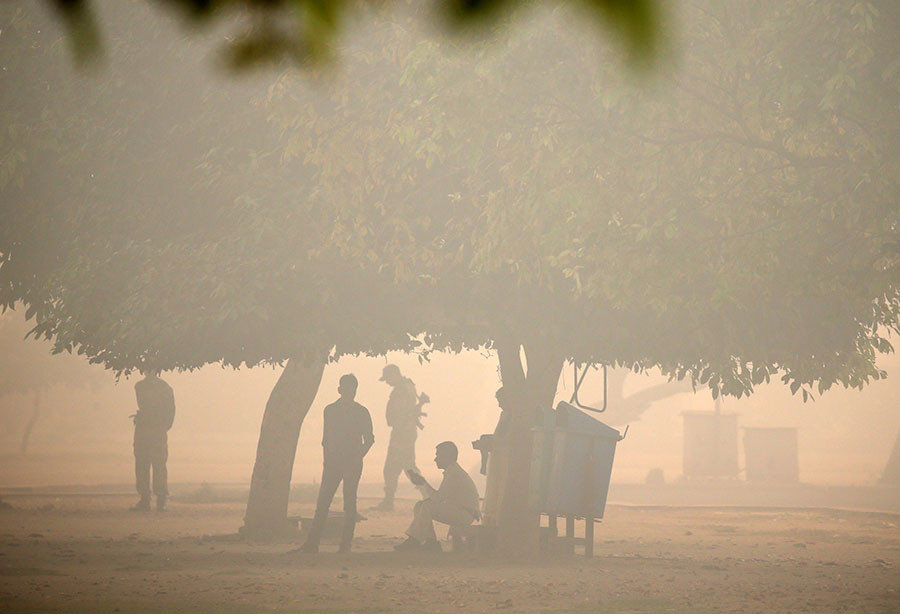
New Delhi usually ranks as one of the world's most polluted cities as it is, but on Monday morning things spiraled out of control. The situation was worsened by smoke from firecrackers used to celebrate the Hindu festival of lights, Diwali, plus the burning of crops in the region.
"Last night, levels hit the severe category, which is the worst. You could see and sense how the visibility had come down and there was a choking haze all around," said Anumita Roychowdhury from the Centre for Science and Environment, as cited by Reuters.
The levels of PM 2.5, a tiny particle that can get into the lungs, have reached up to 883 micrograms per cubic meter, the Delhi Pollution Control Committee said, as quoted by The Hindu. This is 14-16 times higher than the standard of 60 micrograms.
According to the WHO's mean guideline of 25 micrograms per cubic meter, the maximum level of New Delhi pollution on Monday is up to 35 times the international norm.
Other sources have given even scarier figures - the US embassy in New Delhi said PM 2.5 levels had jumped to 1,126 by 2am Monday (20:30 GMT).
The Indian capital is one of the most polluted cities on the planet, with India also being named as home to four of the world's 10 cities with the highest level of air pollution, the WHO reported in May, as quoted by Reuters.
"Where is the plan for short- and medium-term action, and for emergency action? We need one very urgently," Roychowdhury said.
A recent report by UNICEF shows disturbing figures: 300 million children worldwide breathe extremely toxic air, and 600,000 die annually because of it.





When I went there in 2013, all our tour group asked 'why is the sky grey and when is it going to change?', because it just went on and on when we were travelling. The simple answer is, it was not going to change, and it's because Indians prefer the 'traditional way' of cooking by using wood fires. Yes, they burn wood, and a lot of them do it. It's going to take some doing from the government to try to 'persuade' the majority of people to change their practice to gas, which is cleaner. The 'traditional way' is seen as more sociable, because it is done outside and also this is the way it has always been done.
Indians are inventive, so I'm sure they'll come up with a way to 'encourage' people to use gas, but can they enforce it? Not so easy.